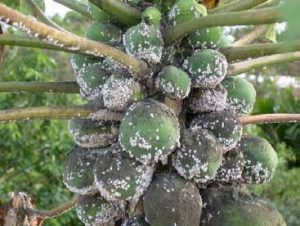Feed the Future IPM innovation Lab: A Critical Role in Global Food Security
The need:food security
The World Food Summit of 1966 defined “food security” as existing “when all people at all times have access to sufficient, safe, and nutritious food to maintain a healthy and active life.” Food insecurity is part of a continuum that includes hunger (food deprivation), malnutrition (deficiencies, imbalances, or excess of nutrients) and famine. Although difficult to measure, food security statistics indicate that there is a food crisis in a stressed world. Consider these facts:
- 805 million people suffer from malnutrition;
- Most of the 805 million are in Southern Asia (35%), sub-Saharan Africa (27%), and Eastern Asia (19%);
- 99% of the undernourished live in developing countries;
- 642 million people in Asia and the Pacific are undernourished;
- 6 million children’s deaths/year are linked to malnutrition.
The Challange
The world faces three major challenges:
1) to match the rapidly changing demand for food,
2) to do so in ways that are environmentally and socially acceptable, and
3) to ensure that the world’s poorest people are no longer hungry.
Crop yields have fallen in many areas due to declining investments in research, increasing water scarcity, land degradation, climate change, and biotic and abiotic stresses (insect pests, plant pathogens, nematodes, weeds, vertebrates, drought, flooding, extremes of temperature and nutrient deficiency). Globally, an average of 35% of crop yields are lost to pre-harvest pests and 10–20% to post-harvest pests. In the 2002–2003 period, pre-harvest losses were estimated to be 26–29% for soybean, wheat and cotton, and 31%, 37%, and 40% for maize, rice, and potatoes respectively. Overall, weeds caused the highest potential losses (32%), with animal pests and pathogens being less important (losses of 18% and 16% respectively). Invasive species, climate change, and the loss of biodiversity due to the misuse of pesticides amongst other factors all contribute to increased pest-induced losses.
World population is expected to reach nine billion in 2050. To feed this population, there must be a 60–70% increase in food production. We must also figure out a way to deal with the effects of climate change. The area under cultivation is not expected to expand to meet the gap, and we have yet to meet it by increasing yield per unit area and reducing losses in field and post-harvest handling. A concerted effort to reduce these losses without jeopardizing environmental and public health concerns by adopting Integrated Pest Management (IPM) could reduce the loss by 50%, leading to a needed increase in food production of only 30%.
This is an extract of the full article published in: Outlooks on Pest Management – August 2015 issue.
The full text of this article is available to subscribers of Outlooks on Pest Management.
Non-subcribers may buy & download full text article.
Authors: R. Muniappan and Elvis A. Heinrichs – describe USAID funded strategies to bring IPM to developing countries.
Category: Agriculture, Horticulture-Amenity











